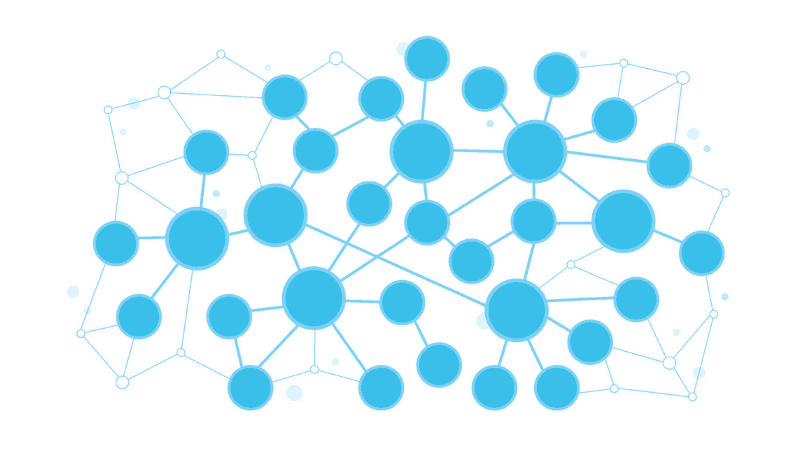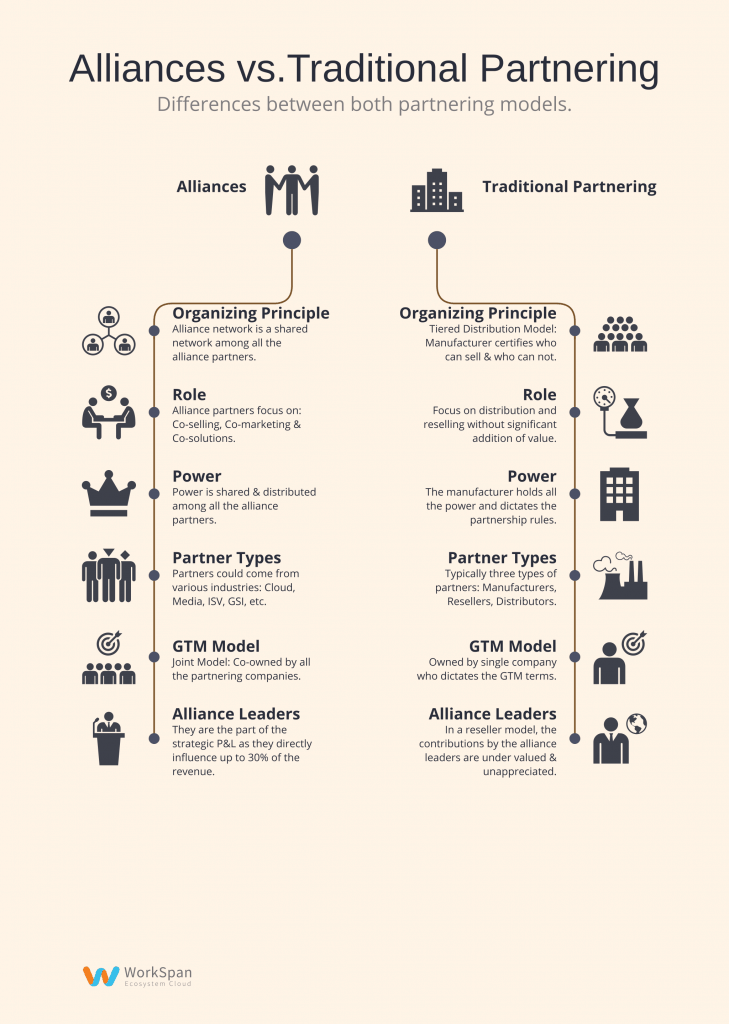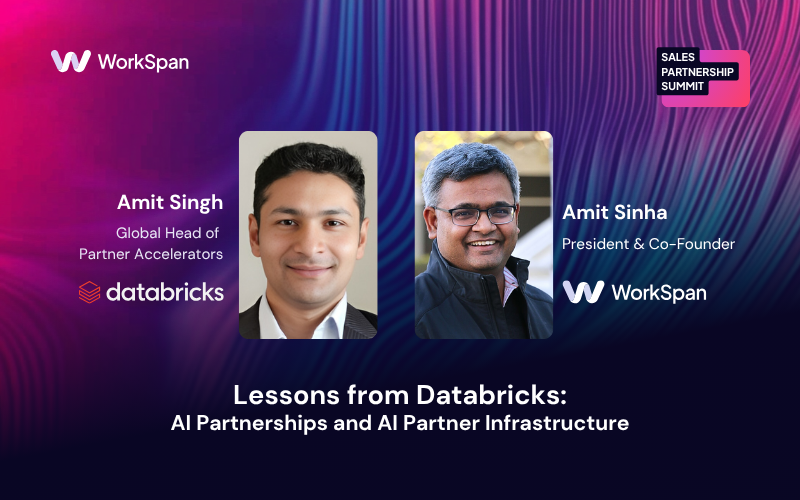
We are at the forefront of a tremendous shift where B2B companies are going to market with new, broader, more innovative and dynamic partner ecosystems than ever before.
It is being driven by ever-increasing competitive pressures and the constant demand for more and faster innovation by end customers.
We are moving away from a linear partner management model to a partner ecosystem. Partners are interdependent and collaborating with each other to create joint solutions they bring to market faster than ever before.
BCG (Boston Consulting Group) explored 40 ecosystems across different industries and found that the traditional aspects of the new digital ecosystems are changing how companies collaborate across different industries to create co-solutions for the end customers.
The Changing Characteristics of Collaboration

The legacy approach:
The linear value chain concept stands on the assumption that your partners & distributors understand and equally care about your product offering as much as you do.
Most B2B organizations have a partner program in which they categorize the partners into gold, silver, and bronze. And within the company, there are partner managers who specifically are in charge of each of these categories.
It’s a very distribution-focused linear model and is optimized to do one thing and one thing only - sell more products and distribute them very quickly.
Why do B2B organizations manage their partners this way?
For starters - it has made it easier to manage partners.
Let’s look at the concept of partner types - organizations not only divide their partners into gold, silver and bronze categories but further organize them by different partner types such as SI, ISV, Hardware, Mobile and Cloud categories.
Companies will pick a category based on primary type, create a partner program and typecast a partner in a particular category. It seems like a practical approach because it makes it easier for a partner manager to manage and organize them.
But this is no longer practical because, today, partners are dynamic and aren’t easily categorized. An ISV partner might have a service offering that you can leverage for creating different solutions for different opportunities and could be in Cloud with the mobile app for end-user consumption.
Furthermore, once a partner gets typecast into a category, they hardly ever get considered for collaboration for different offerings and solutions.
Out of sight, out of mind. And we have often heard from various partners that they do not like being labeled into one category because it hinders their growth by restricting access to new opportunities.
The New Frontier:

According to the study by Accenture, “Ecosystems could unlock $100 trillion of value for businesses and wider society over the next 10 years.”
It is imperative that the businesses embrace the new ecosystem cloud model to stay competitive.
The current partner management model is broken, limited in its ability to address today’s needs, and is prime for disruption by this new trend of the partner ecosystem.
In a partner ecosystem, the customer is at the center, and every solution is dynamically built, marketed and sold to address their joint customer’s business problem.
The formation of the ecosystem always starts with learning about the customer & their business problem:
- Who are they?
- What do they want to buy?
- What is the business problem they are trying to solve?
- Why is their current solution is not working?
- What is the underlying need for the solution?
Today’s customer is well informed and well connected. They expect a fully functional holistic solution out of the box. E.g., if a customer is purchasing a house, and signing the paperwork, they expect the ability to eSign the documents, store them in the cloud, connect it with their bank for automated payments, etc.
The only way to enable the creation of a full-fledged holistic solution is by creating a partner ecosystem around a customer problem to generate a co-solution which may include an ISV partner, cloud provider, eSign functionality provider, system integration services, etc.
Partner ecosystems speed up the process of gathering more opportunities.
Regional and local teams are always closer to the customer and could understand their problem on a deeper level, better than anyone else. With the partner ecosystem, if one partner’s field team comes across an opportunity, they can invite other companies in their network to add value in creating the co-solution or co-selling into the account.
It helps the whole partner ecosystem to be proactive and grow together by tapping into each other’s network and discovering opportunities that they might not have had access to with legacy partner management programs.
To sum up.
According to research by Accenture, 60 percent of executives agree that ecosystems are a way to implement new business models, or even lead disruption. In today’s hypercompetitive and connected world, the use of dynamic ecosystems will be imperative for forward-looking companies.
As technologies become more complex businesses will look outside the boundaries of their organization for innovations and collaborations with technologies from various industries. Your next partner program should not be organized around partner tiers and partner types but via ecosystems to facilitate the dynamic and ever-evolving customer needs.
Request Your FREE 1 on 1 Demo of the Ecosystem Cloud

Infographic:

Heading
Heading 1
Heading 2
Heading 3
Heading 4
Heading 5
Heading 6
Lorem ipsum dolor sit amet, consectetur adipiscing elit, sed do eiusmod tempor incididunt ut labore et dolore magna aliqua. Ut enim ad minim veniam, quis nostrud exercitation ullamco laboris nisi ut aliquip ex ea commodo consequat. Duis aute irure dolor in reprehenderit in voluptate velit esse cillum dolore eu fugiat nulla pariatur.
Block quote
Ordered list
- Item 1
- Item 2
- Item 3
Unordered list
- Item A
- Item B
- Item C
Bold text
Emphasis
Superscript
Subscript





.png)